Starland Alberta
Starland Alberta. Not a town. Nothing more than a siding along a former rail line, the only thing here, a lone grain elevator. It’s relatively modern one, a bit unusual in some ways, which we’ll touch on soon enough. Think of it as a transitional design of sorts, from the wood elevators of old that preceded it, to the huge concrete and steel “inland terminals” of today.
We’re on great plains just north of the Drumheller Badlands, the nearest town a tiny little burg with the name of Morrin. The elevator’s close enough to be seen from it, just to the south. There, you can’t miss it. Certainly the tallest thing around, it dominates the view, this high-rise “prairie sentinel” towering up and over everything for miles around. Standing near its base…look up, waaaaay up.
The Starland Elevator dates from the early 1990s. Unlike the majority of these buildings (thousands of them across the west), it was not constructed of wood as had been the norm since the early days of the industry, going back to about 1900-ish and lasting into the 1980s, and instead was made of steel. Quite groundbreaking given the long standing traditions within the industry, something new, cutting edge and we dare guess a bit experimental it surely it stood out as different. It was the second of this design built, and as it turns out the last. More on this in a moment.
It was on the large side of what was typical for the era and was more efficient and speedy in the processing of grain. Loading of rail cars was under cover instead of out in the open, which afforded those doing the work some level of protection from the elements. Still, in some ways, it was not all that different in form, function and even overall appearance than the old school wood grain elevators of years past. It just did it bigger and faster.
But there was room to improve. For what ever the reason, the design was not successful enough and this one and the other mentioned (located in Etzikom AB, built late ’80s, and still standing) being the only ones constructed. For the firm who commissioned them, a huge player in the industry, they became orphans of sorts. They were good enough that they continued to be used but no others were built afterwards. Still, I bet a lot of lessons were learned. Soon on the huge concrete or steel bin-style inland terminals, several fold in size compared to the one seen here, would become the norm.
The original owner of the building was the Alberta Wheat Pool, a farmer owned cooperative. It was one of hundreds and hundred of prairie grain elevators the firm owned (almost all wood), the largest grain handler in the province, and one of the largest in the country. The building still wears “Pool” colours.
In the latter half of the 1990s the AWP joined up with a competitor becoming Agricore, who used the building into the early 2000s. The firm divested itself of lots of smaller elevators at this time, followed by yet more mergers soon afterwards. But that’s another story.
The building is said to have stood empty for a couple years before the current owner, a local farmer, purchased it. It’s used for grain storage, the fate of many “retired” elevators. The product is kept until demand is high or the price favourable and then trucked out. Really, not all that different from when it was a commercial facility.
The railway that passed in front of the Starland Elevator is but memory. The line came through in early 1910s and was built by the firm Canadian Northern Railway – Alberta Midland charter, a “paper” railway owned by the parent that ran north/south through the heart of the province. The CNoR later morphed into Canadian National Railways, who operated the line from the early 1920s to the mid-1980s. It was then sold to shortline operator Central Western Railway (from herein CWR). It was always a pretty low volume grain branch.
Central Western operated the line past Starland into the late 1990s or thereabouts (conflicting data) before calling it quits. By this time the elevator was the last business in the area, the track by then a stub isolated and operated separately from the rest of the CWR. This short two or three kilometre ribbon of steel ran as needed, interchanging with Canadian National Railways a bit to the south.
The track remained in place unused and in situ, all overgrown, ties rotting and rails rusting, until fairly recently. Then one day, some crews and machinery showed up and boom, it was gone in flash, the roadbed is now nothing more than a grassed over berm cutting across the plains.
Interestingly, a small section of track near the elevator was left behind intact, the original “main” and connected to it the grain siding, and doubly curious the latter is occupied by an old rail car. Strange indeed! Curious to know why it was seemingly “overlooked” by scrappers, the track here, the car, where as everything else on what was left of the line was removed. We called around and came up empty handed.
The car number, #327008, fails to come up in any guides, nor for that matter do any cars in the #327xxx series. What the? There should be some. It’s a former CNR hopper, that much of course is obvious but probably was last owned by the Central Western Railway. It follows a style built in the 1940s and 1950s and at some point was converted to maintenance of way service to be used in the dumping of line ballast. Strange to see it sitting there, on the remains of the elevator track, this “mystery car”.
Just seems weird…would sure love to know more. If you know something we don’t, that adds to the story, please chime in! We’re here, waiting. Still waiting…
Just a sampling of the grain elevators we’ve chronicled…
Grain Elevators of Magrath.
Buffalo 2000.
Sharples P&H.
Alberta’s oldest grain elevator.
If you wish more information on what you’ve seen here, by all means contact us!
Date: March, 2017.
Location: Starland, AB.
Article references (and thanks): Jim & Donna Pearson, Alberta Pool Records, Canadian Trackside Guides.
The elevator is on private property. BIGDoer.com shot with a long lens.
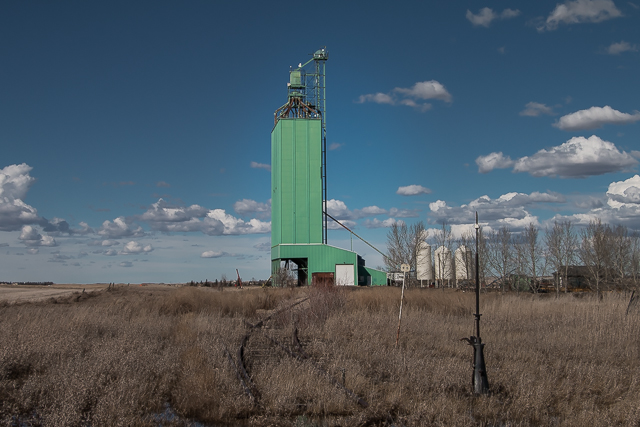
The grain elevator at Starland Alberta.
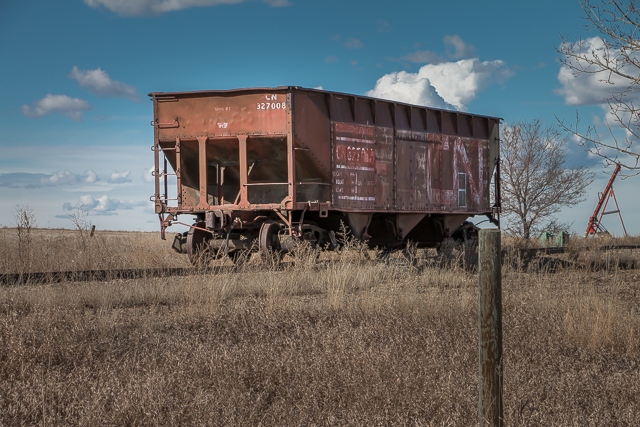
An old rail car, left behind when the line was abandoned.
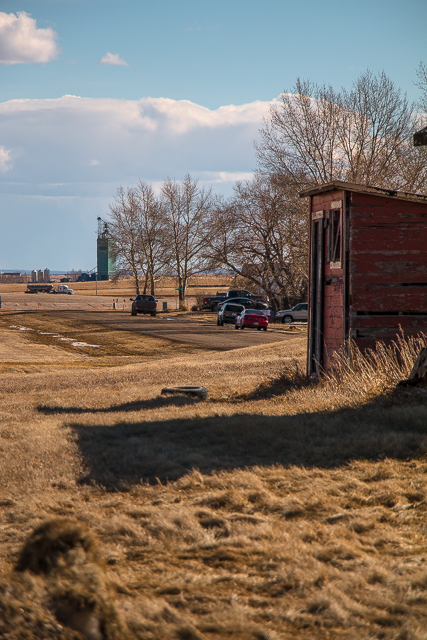
View from the nearest town – old RR building in front.

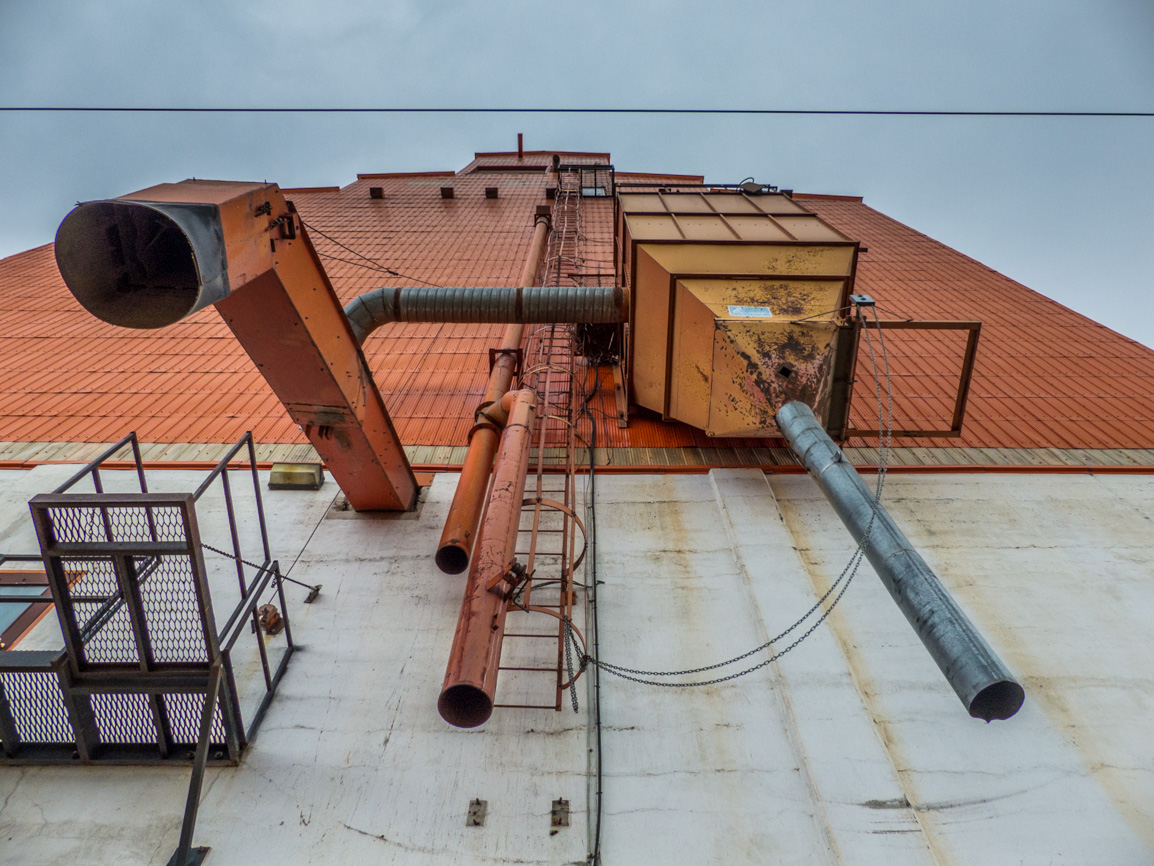
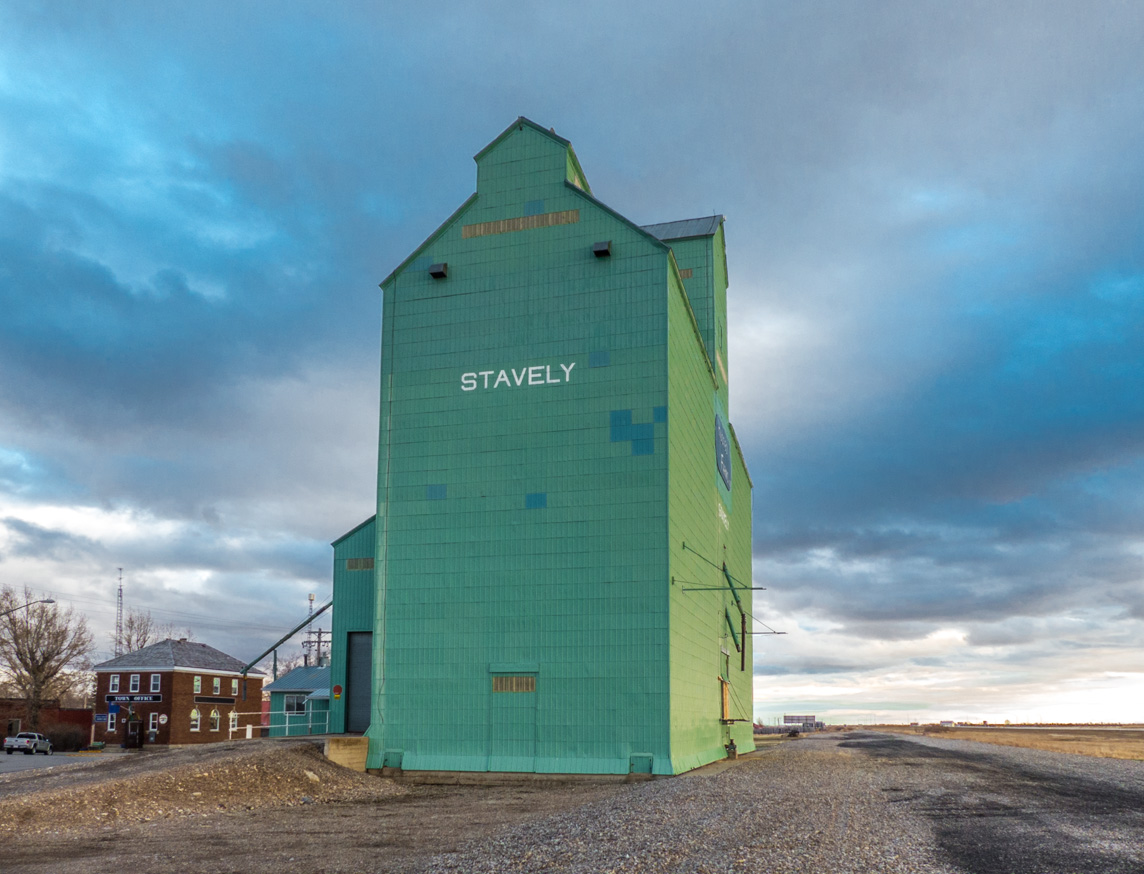
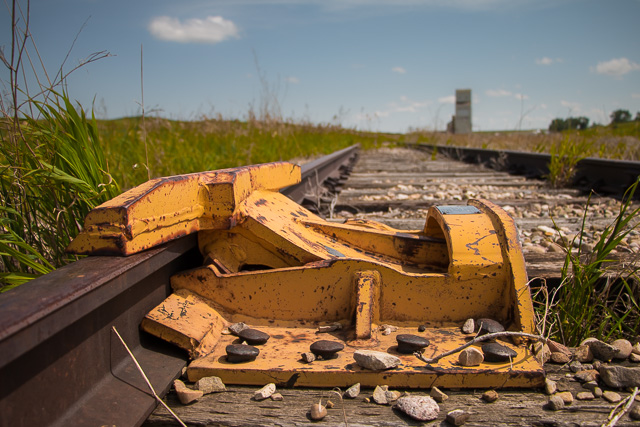
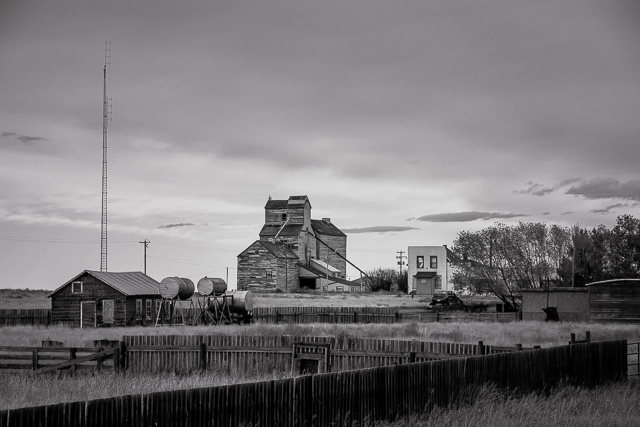
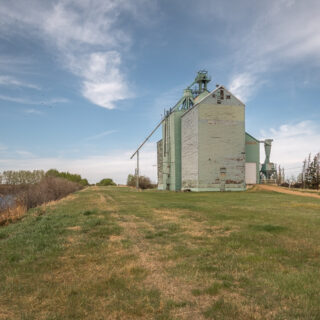
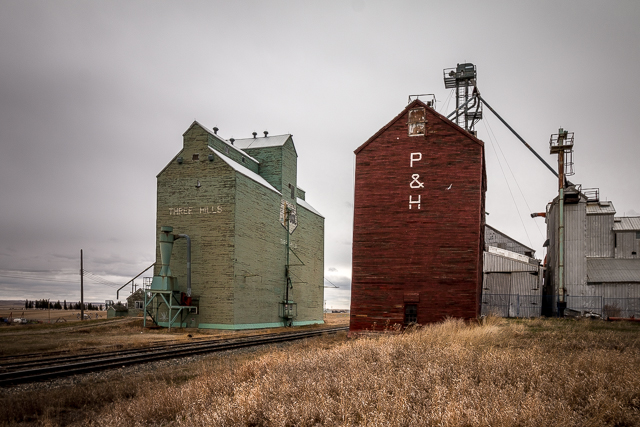
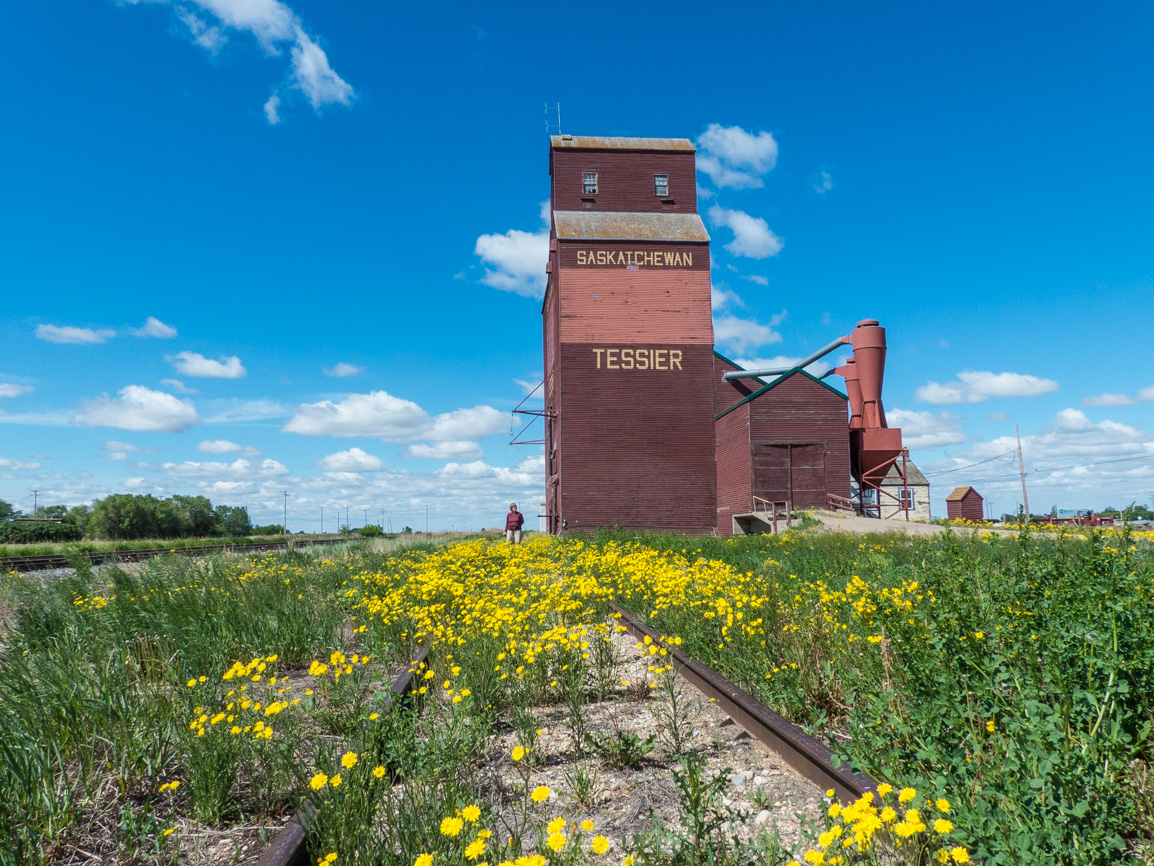
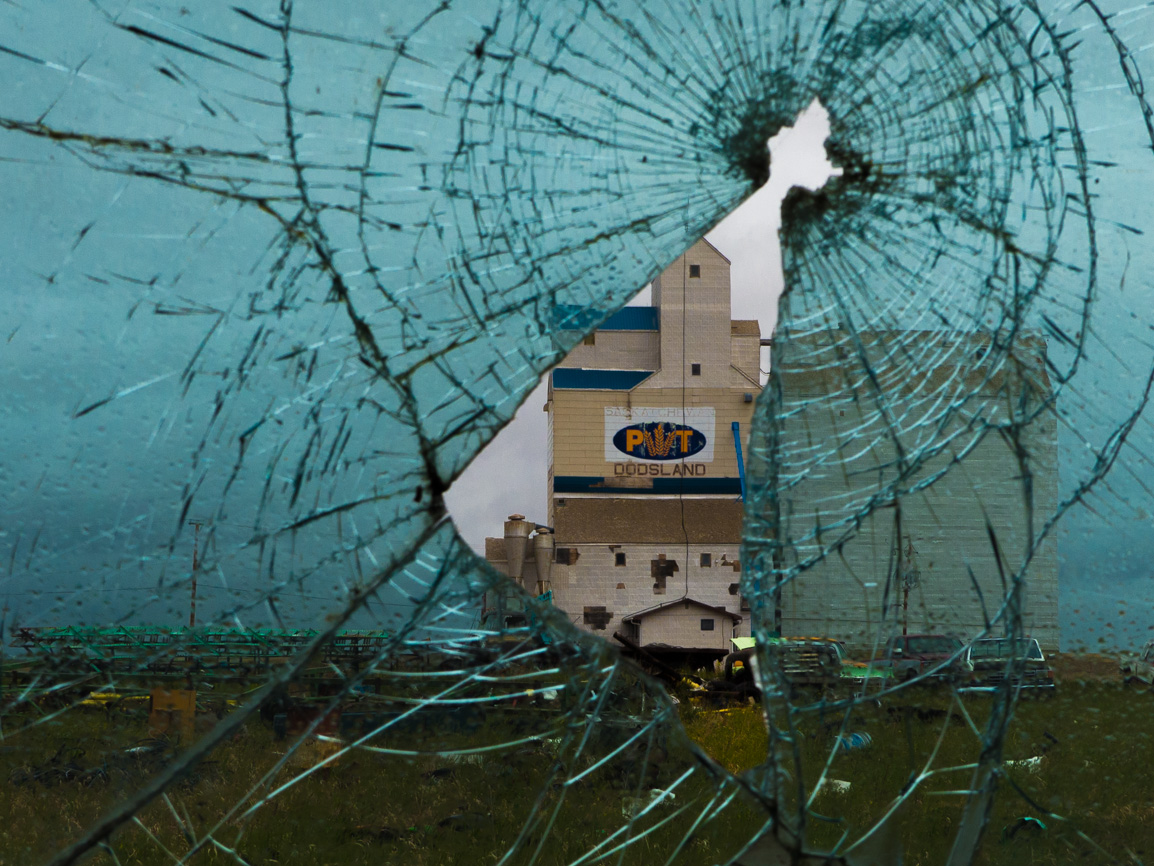
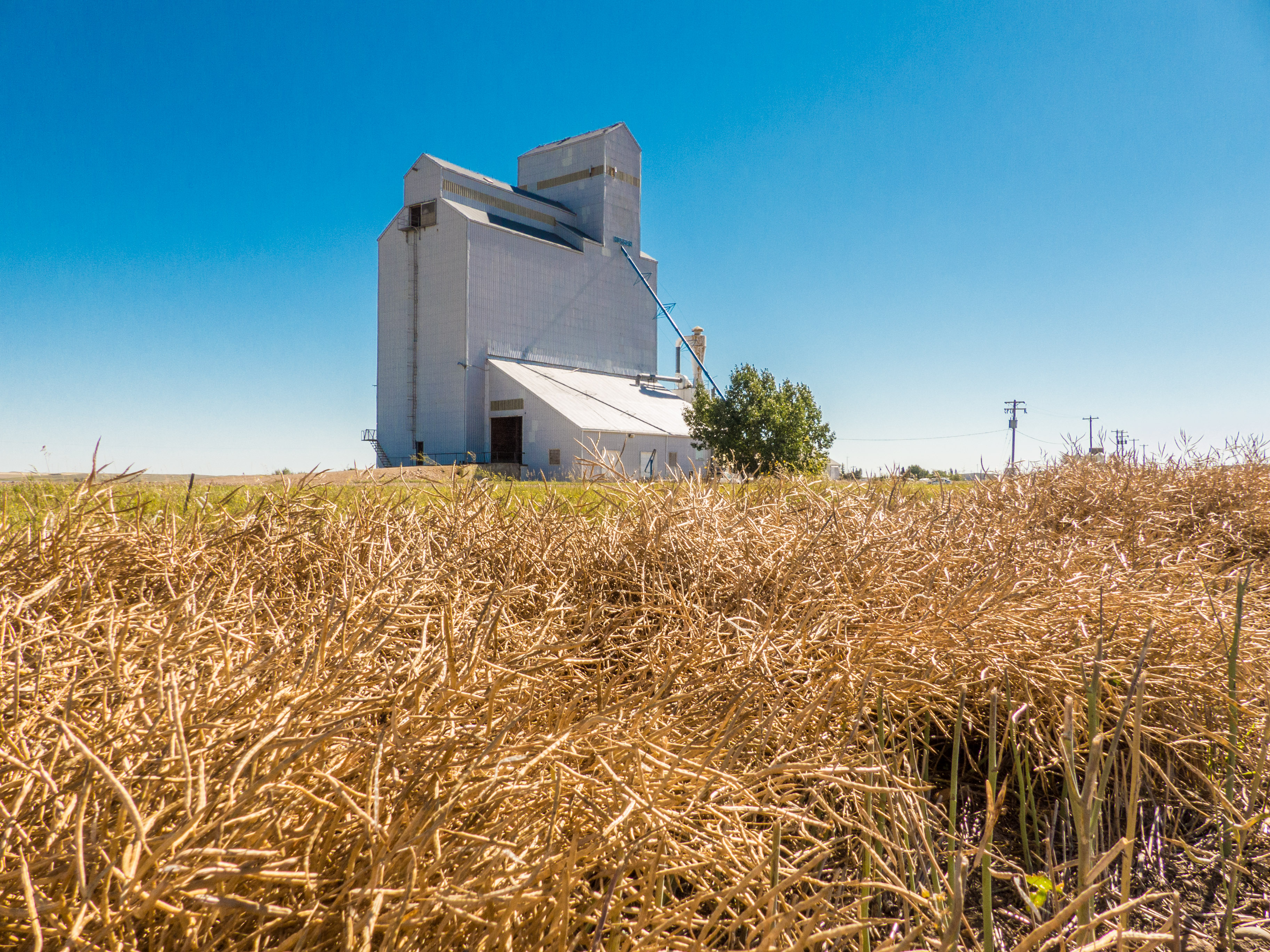
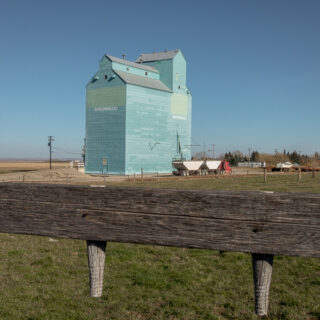
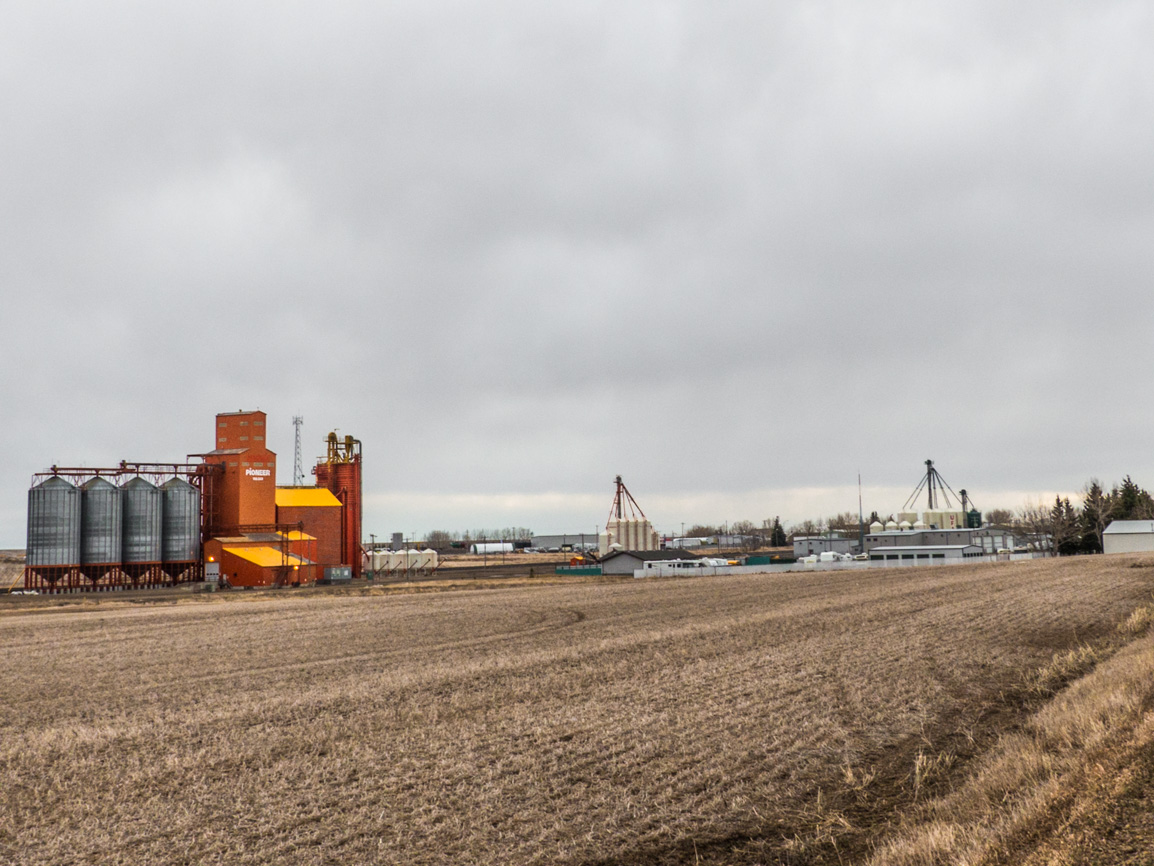
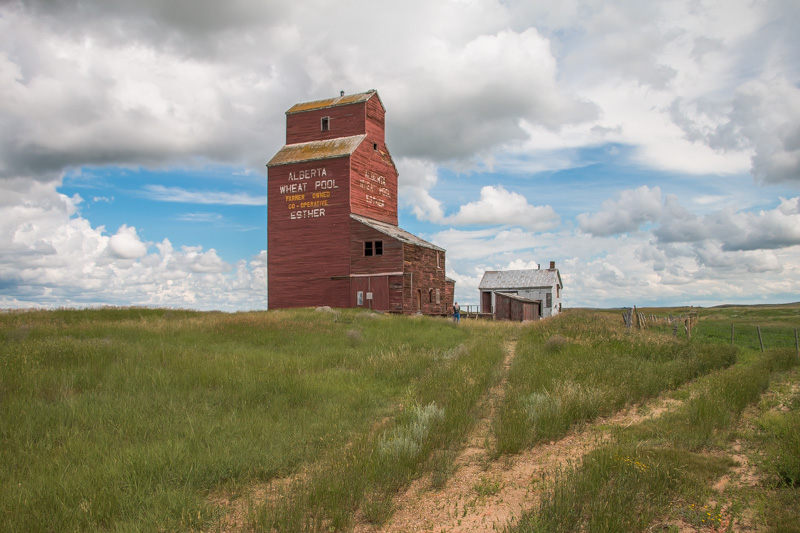
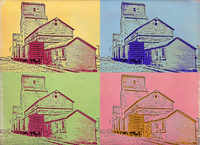






Interestingly, when we visited the Grain Academy at Irricana, they had a photo of this elevator when it first opened. At the bottom of the photo was a plaque mentioning: “Starland, AB – AWP building the first in North America an over track country elevator. Designed and constructed by Silco Limited.”
I found that an interesting statement – I wonder if there are other Starland style elevators still standing?
That Grain Academy is something and they did a good job. Isn’t the one Etzikom close in design? I recall chatting with Jim Pearson (the other one) and he remarked that several of this style were built when he was working at the Pool, but I can’t seem to find those notes.
Yes correct Chris it is similar in design, except its loading for trains is the same as the wooden elevators. Starland has the bins over the tracks for loading the trains. I recall Jim (the other one you mention) sending me an email with a list, I’ll have to look for it again.
I see each of the steel ones is slightly different in configuration, yet there’s clearly a family resemblance between them all.
This car is still stenciled with CN reporting marks, so I was actually wondering if CN leased it to CWR rather than selling it to them outright.
Good point, if it was CWR’s car, they should have marked it. It does not come up in any car databases, so I’m not sure who owned it.
When was the CWR shut down?
No one seems to know the exact date – most stuff we dug up and the people we spoke with said the late 1990s, although we found some references that suggested perhaps 2000 or thereabouts. Around that time.
Cool find, Chris!
It is! Thanks for commenting!
Keep up the good work !!
We will!
Thanks Chris and Connie, Always on point and interesting!
We try! Appreciate the love.
Sure enjoy your post. Keep up the good work!
Hope to keep adventuring until we drop. Thanks for commenting!
Thats an old car, those journal boxes on the axles.
Yes, haven’t seen a car with them in like forever. I think they’re were outlawed in the early ’90s, except for special cases, captive line, non-interchange service being two instances.
Very cool! I have missed stopping at this elevator a few times already, will have to make an effort this year!
I’ve always paid it no mind. Gotta break out of that mindset. I do it too often. It was worth the stop.